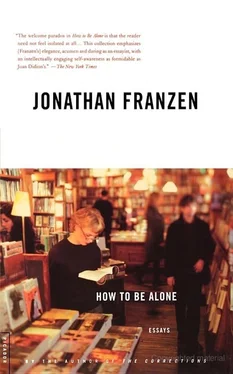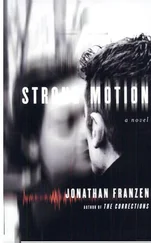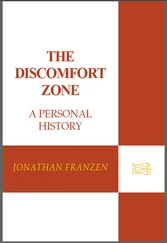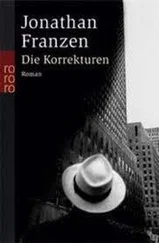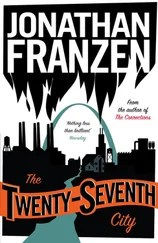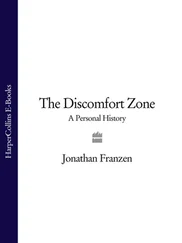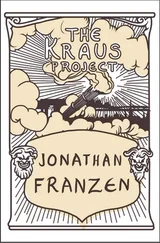My craving for city life feels entirely different. It’s often tinged with anxiety; I’m never entirely relaxed until I’m back at home; there’s a world of difference between inside and outside. How is it possible that life in New York, whose buildings are like ossified upwellings of pure molten capital, can be so much less beholden to the world of consumerism than life in the suburbs, which ostensibly offer more freedom and privacy? The answer is, narrowly, that cities represent an older, less advanced stage in the development of buying and selling, in which producers work cheek by jowl with consumers and the whole economic mechanism is open to inspection and so is less susceptible to the seamless enchantment of modern sales pitches; and, more generally, that there’s something in the very nature of cities which enforces adult responsibility. I don’t mean to suggest that we city dwellers are any less mad for products than suburb dwellers are, or that the cleansing and police actions of various Business Improvement Districts are not, even now, transforming large swaths of Manhattan into outdoor malls — only that it’s far easier on the streets of New York to have experiences that have nothing to do with the spending of money than it is in the typical galleria.
Rybczynski is correct, nevertheless, in stressing that “civic” and “commercial” have always been near-synonyms in America. Although European cities, too, historically functioned as trading and manufacturing centers, they had more ancient functions as well: as fortification, as the sites of cathedrals and universities, as the residences of princes, and, most important, as the embodiment of regional or national identities. Barcelona is Catalonia, and every new building erected there serves to make Catalonia’s identity that much more glorious and concrete. It’s impossible to imagine an American city being cherished in the same way, if only because we have no regional identities as coherent and enduring — as tribal —as the Catalonian. This country was populated largely by immigrants in search of freedom or economic opportunity, or both, and I suspect it’s no accident that the heyday of American cities directly followed the decades of peak immigration. These immigrants were similar only in their rejection of the Old World and so could never develop urban fealties that extended beyond a given ethnic neighborhood. It was only a matter of time before they adopted the New World ideal of house-as-kingdom, with its implications that what you earn and what you buy matters far more than where you do it.
The real mystery, therefore, is not that we have so few cities “like Paris” but that we have any at all. However many Americans prefer the suburbs, there are still millions who expressly choose cities. “Yuppie” is not a kind appellation, but the people who put the u in the word remain impressive in their sheer numbers. Even the most woebegone urban centers — Syracuse in the Rust Belt, Colorado Springs in the midst of neo-Californian sprawl — manage a few blocks of mixed-use vitality. And many larger cities — New York, Boston, San Francisco, Chicago, Los Angeles, Seattle — have a clearly sustained critical mass. For better or worse, the most reliable measure of a city’s vitality is whether rich people are willing to live in the center of it. Once upon a time, the middle class was the bellwether of urban vitality; in Mayor Giuliani’s speeches, it still is. But, as Labor Secretary Robert Reich has observed, the term “middle class” today has a definition more sociological than economic. And the best definition might be “suburban.”
However reliable the presence of the rich may be as an indicator, it’s merely the final effect in a chain of causes which begins with a city’s ability to attract young people. How long would the upper crust persevere on Park Avenue without the horde of young singles who fill Yorkville? How long would downtown remain a capital of culture without constant infusions of young artists, students, and musicians? We hear a lot about the dependence of poor people on cities, but young people, especially creative young people, need them just as much. The suburbs may be an ideal place to spend a childhood, but people in the years between leaving the nest and building a nest of their own need a place to congregate. So cities will continue to see, at a minimum, heavy nighttime and weekend use — unless, of course, Internet-brokered marriages become common; and the only thing more dismal to imagine than virtual courtship is daily life in the marriage of two people who would court that way.
HIKING IS WHAT I DO for fun in Manhattan on windy days or after sundown, when the diesel fumes lift. I’m a recreational walker, and in the last few years I’ve noticed something odd when I’ve hit the sidewalks of suburban St. Louis and suburban Colorado: a not negligible percentage of the men speeding by me in their cars or sport-utility vehicles (it’s always men) feel moved to yell obscenities at me. It’s hard to know why they do this. The only things unusual about me are that I’m not driving and that I’m not wearing teal and purple or a backward baseball cap. My guess is that they yell at me simply because I’m a stranger, and from the perspective of their glassed-in vehicles I have no more human reality than the coach on their TV screens who has elected to punt on fourth and short.
I’ve been yelled at in New York, too, but only by deinstitutionalized psychotics, and then only in the midst of fellow subway riders who sympathized with me. Jane Jacobs identified as a hallmark of city life the existence of privacy in heavy crowds — a privacy whose maintenance depends not on the pseudoparental expedients of isolated houses and controlled shopping environments but on modes of adult behavior best learned in public spaces like the sidewalk. That the country’s widely decried “breakdown of civility” began at home, rather than in so-called urban jungles, can be confirmed at any movie theater, where audiences accustomed to watching videos in the bedroom have forgotten how to shut up.
In Death and Life Jacobs also quoted Paul Tillich, who believed that the city, by its very nature, “provides what otherwise could be given only by traveling; namely, the strange.” Familiarity, whether of chain stores or of cookie-cutter subdivisions, erodes the autonomous intelligence and, in a weird way, undermines privacy. In the suburbs, I’m the stranger; I feel exposed. Only in a crowded, diverse place like New York, surrounded by strangeness, do I come home to myself.
I’m not so innocently enamored of cities, of course, as not to see that the plate-glass windows of Silicon Alley serve purposes of display similar to those of the CRT screens behind them: that the hidden link between Fashion Café and Cyber Café is a culture of Being Seen. It’s possible to worry, too, that young people who come to Manhattan seeking what I seek — centrality, the privacy of crowds, the satisfaction of being a fly in the ointment — will eventually be repelled by the miasma of Disneyfication that is hanging over SoHo and Fifty-seventh Street and creeping into the East Village and Times Square. For now, though, I work and sleep in a building that houses two dressmakers, a realtor, an antiques dealer, a caterer, and a fish seller. When I lie on the floor and relax by listening to my breathing, I can hear the slower respirations of the city itself, a sound like the rumble of a surf: subway trains crowded with people who are teaching themselves how to be here.
[1995]
Not many warehouses masquerade as chateaux, and of those that do, the Mercer Museum in Doylestown, Pennsylvania, is surely one of the largest. The museum is a hundred feet tall, has the flat face and square turrets of a reform school or a sandcastle, and is made entirely of poured concrete. A wealthy eccentric named Henry Mercer built it in the first decade of the century, in part as an advertisement for concrete and in part as housing for his unparalleled collection of the tools that American industrialization was rendering useless. Mercer had cruised the barns and auctions of his changing world and had brought back to Bucks County every imaginable style of cobbler’s last, cider press, and blacksmith’s bellows, also a whaling launch complete with harpoons. In the museum’s highest turret you’ll find a trapdoor gallows and a horse-drawn hearse. Dozens of hand-carved sleds and cradles are stuck, as by poltergeist, to the vaulted concrete ceiling of the seven-story atrium.
Читать дальше
Конец ознакомительного отрывка
Купить книгу
